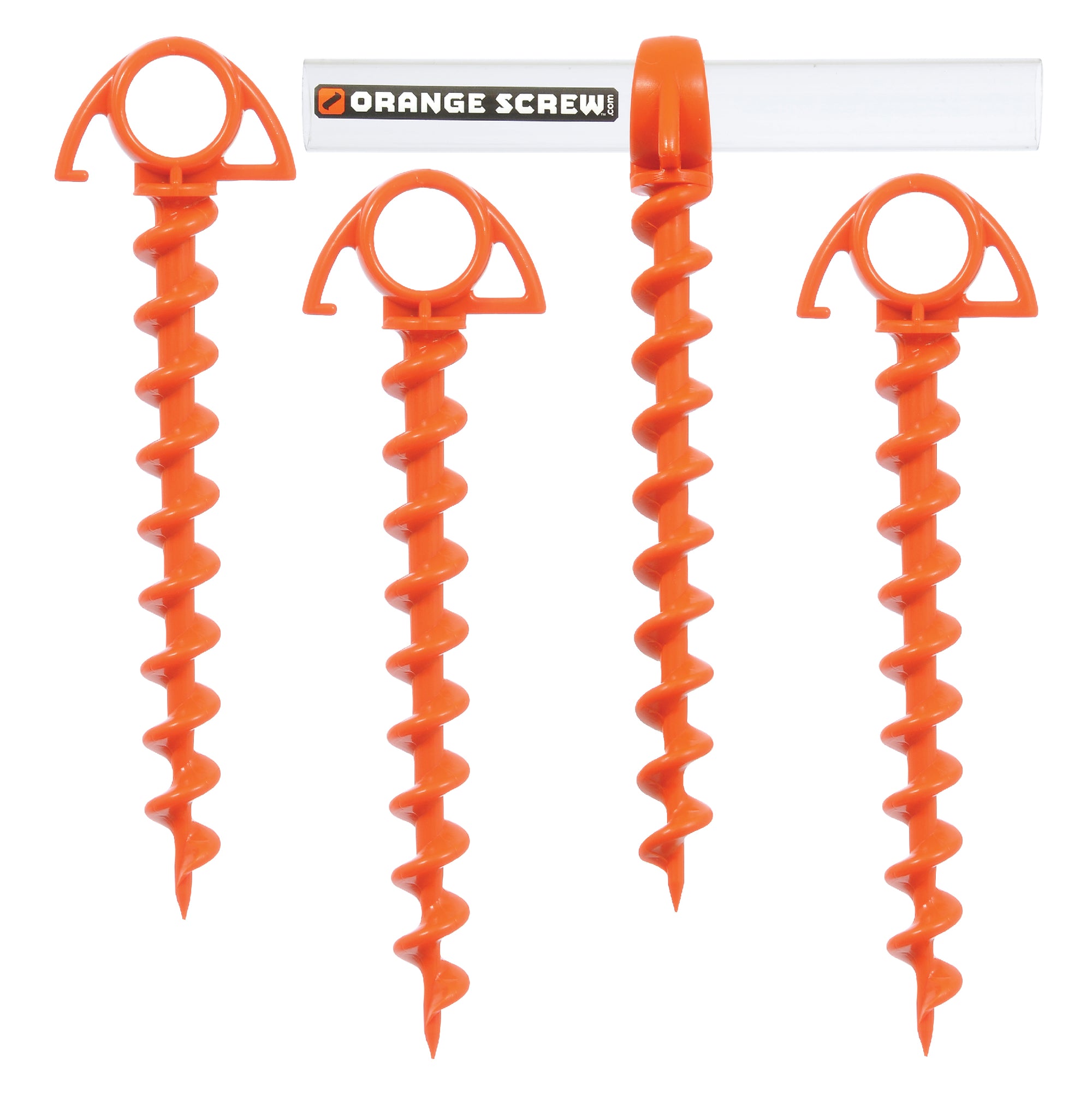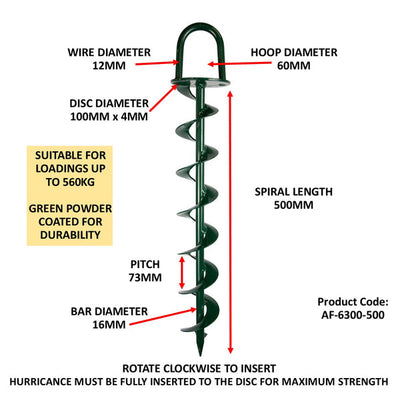Advantages of a High-Quality Ground Anchor for Maximum Protection
Check Out the Different Sorts Of Ground Anchor for Your Next Task
From auger anchors, which stand out in diverse soil problems, to risk anchors designed for short-term installations, the alternatives are countless. In addition, concrete and screw anchors existing one-of-a-kind benefits in details situations, while deadman anchors are customized for applications requiring resistance to lateral forces.

Auger Anchors
Auger anchors are a preferred option in various building and construction and landscaping tasks as a result of their special style and effective securing abilities. These supports include a helical screw-like shaft that is driven into the ground, enabling a safe and steady hold. The spiral design promotes easy installation and makes best use of resistance against lateral pressures, making auger supports especially reliable in applications such as fencing, short-lived structures, and erosion control.
The installment procedure of auger supports is relatively simple. They can be by hand or mechanically mounted, depending upon the size and needed deepness. This versatility enables for their use in diverse dirt problems, from sandy to clayey surfaces. Furthermore, auger anchors can be conveniently gotten rid of and reused, which adds to their cost-effectiveness and sustainability.
One of the significant benefits of auger supports is their capacity to distribute lots evenly throughout the surrounding dirt, decreasing the threat of dirt disruption and lessening ecological influence. Furthermore, they are much less vulnerable to loosening or heaving gradually compared to traditional anchoring techniques. As a result, auger supports are an excellent selection for tasks requiring long lasting and reliable anchoring options.

Risk Anchors
When it comes to securing frameworks in a range of exterior applications, risk anchors offer a reliable and straightforward remedy. These supports are typically created from resilient products such as steel or aluminum, created to stand up to environmental stresses while giving ideal security. Their easy design permits fast setup, making them an optimal choice for irreversible or short-term anchoring requirements.
Risk supports are particularly useful in safeguarding camping tents, canopies, and other lightweight frameworks versus wind and weather. They function by being driven right into the ground at an angle, producing a solid hold that withstands pull-out forces - Ground Anchor. The effectiveness of risk supports depends on numerous variables, including soil kind, wetness content, and the angle of setup
For added safety, several stake anchors include attachment points for ropes or straps, enabling tension changes as needed. In applications such as landscape design or building, they can successfully stabilize devices or frameworks on uneven surface. Overall, risk anchors provide a affordable and functional remedy for safeguarding different outside installments, making them a favored option for professionals and do it yourself fanatics alike.
Concrete Anchors
Concrete supports give a robust remedy for safeguarding frameworks to concrete surfaces, guaranteeing stability and security in various applications. These supports are important for jobs ranging from household building and constructions to large industrial installments. They are available in different types, consisting of expansion anchors, adhesive supports, and undercut supports, each designed for particular load requirements and environmental problems.
Development supports rely upon mechanical devices to grasp the concrete when set up. They are ideal for medium to sturdy applications. Glue anchors utilize high-strength epoxy or resin to bond the support to the concrete, offering superior load-bearing capabilities, particularly in fractured concrete situations. Undercut supports create an unique shape within the concrete, offering outstanding holding power, particularly in applications where tensile loads are widespread.
Choosing the suitable concrete support includes taking into consideration factors such as the weight of the tons, the problem of the concrete, and environmental problems. Proper setup strategies are essential to guarantee ideal efficiency and integrity. When executed appropriately, concrete supports substantially enhance the structural integrity of various projects, making them vital in contemporary construction methods. Understanding the details demands of your task will assist in choosing the appropriate kind of concrete support for the task.
Screw Anchors

Screw supports are a versatile attaching remedy that can be successfully employed in a variety of applications where conventional concrete supports may not be enough. These supports contain a helical layout that allows them to be easily driven into the ground, making them excellent for usage in dirt and other substratums. Their one-of-a-kind framework supplies excellent holding power and resistance to pull-out forces, making them appropriate for numerous jobs, from landscaping to architectural assistance.
Among the key advantages of screw supports is their ease of setup. They require marginal devices and can frequently be installed without the requirement for excavation, which conserves both time and labor prices. Furthermore, screw anchors can be eliminated and recycled, using a sustainable solution for momentary applications.
Screw supports are especially helpful in locations where dirt problems are challenging, such view as sandy or loose soils. Their ability to be set up at differing depths permits customization based upon specific project demands. Overall, screw supports offer a reliable and trusted anchoring technique, making them an outstanding choice for engineers and service providers seeking effective solutions for their tasks.
Deadman Anchors
Deadman supports function as a durable remedy for stabilizing frameworks in tough problems, specifically where conventional anchoring methods might fail. These supports consist of big, hefty objects buried underground, which produce resistance versus side pressures. The style typically includes a horizontal part, such as a block of concrete or a steel plate, hidden in the dirt, to which cable televisions or bands are attached.
The performance of deadman anchors hinges on their capability to distribute tons over a larger area, lowering the danger of failing in unstable soil conditions. They are particularly valuable in applications such as maintaining wall surfaces, momentary frameworks, and incline stabilization, where dirt movement can endanger the stability of the structure.
Installment of deadman anchors requires careful preparation to guarantee they are placed at the correct deepness and positioning, optimizing their load-bearing ability. While they may call for even more labor and material than lightweight anchors, their reliability in negative problems makes them important for lasting tasks. Deadman anchors are functional and can be adjusted to numerous applications, making them a go-to option for designers facing special obstacles in their tasks.
Conclusion
In summary, choosing the appropriate sort of ground support is important for ensuring stability and safety in different tasks. Auger anchors master diverse soil problems, while stake anchors fit short-lived applications. For concrete surface areas, growth and description adhesive supports offer reliable choices, and screw anchors offer flexibility in difficult terrains. Deadman supports are specifically reliable in standing up to side pressures for retaining wall surfaces. Careful consideration of these choices will enhance project outcomes and architectural stability.
In addition, concrete and screw supports existing one-of-a-kind benefits in particular scenarios, while deadman supports are customized for applications calling for blog here resistance to lateral pressures - Ground Anchor.Auger supports are a preferred option in numerous construction and landscaping projects due to their distinct design and reliable securing capabilities. They come in various kinds, including expansion supports, sticky anchors, and undercut supports, each designed for details load demands and environmental problems
Glue supports make use of high-strength epoxy or material to bond the support to the concrete, offering premium load-bearing capabilities, particularly in split concrete situations. In general, screw supports provide a reliable and efficient securing technique, making them a superb choice for engineers and professionals looking for reliable options for their projects.